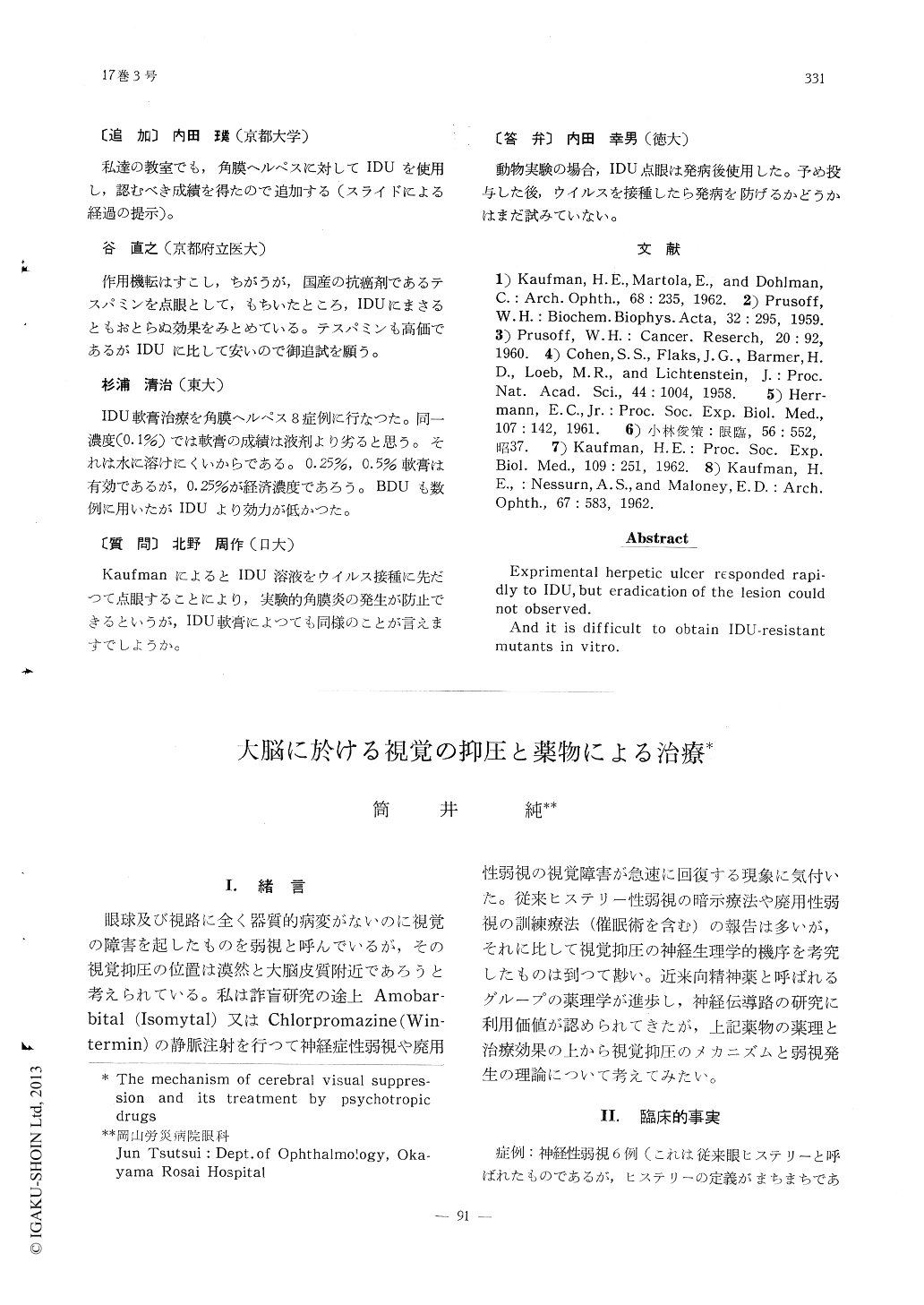Japanese
English
- 有料閲覧
- Abstract 文献概要
- 1ページ目 Look Inside
Ⅰ.緒言
眼球及び視路に全く器質的病変がないのに視覚の障害を起したものを弱視と呼んでいるが,その視覚抑圧の位置は漠然と大脳皮質附近であろうと考えられている。私は詐盲研究の途上Amobar—bital (Isomytal)又はChlorpromazine (Win—termin)の静脈注射を行つて神経症性弱視や廃用性弱視の視覚障害が急速に回復する現象に気付いた。従来ヒステリー性弱視の暗示療法や廃用性弱視の訓練療法(催眠術を含む)の報告は多いが,それに比して視覚抑圧の神経生理学的機序を考究したものは到つて尠い。近来向精神薬と呼ばれるグループの薬理学が進歩し,神経伝導路の研究に利用価値が認められてきたが,上記薬物の薬理と治療効果の上から視覚抑圧のメカニズムと弱視発生の理論について考えてみたい。
Intravenous applications of amobarbital and chlorpromazine, and supplemental oral admi-nistration of amobarbital, chlorpromazine, meprobamate, tofranil, promethazine, per-phenazine, chlordiazepoxide have been atte-mpted for the treatment of visual neurosis (10 cases), visual simulation (1 case), sup-pression amblyopia (3 cases) and vertical nystagmus (1 case). Visual improvement was obtained dramatically in 6 cases and gradual recovery was recognized in 8 cases. The narcoanalysis was benefical to eliminate the suppression in a short time examination and to estimate the possible functional vision.

Copyright © 1963, Igaku-Shoin Ltd. All rights reserved.


